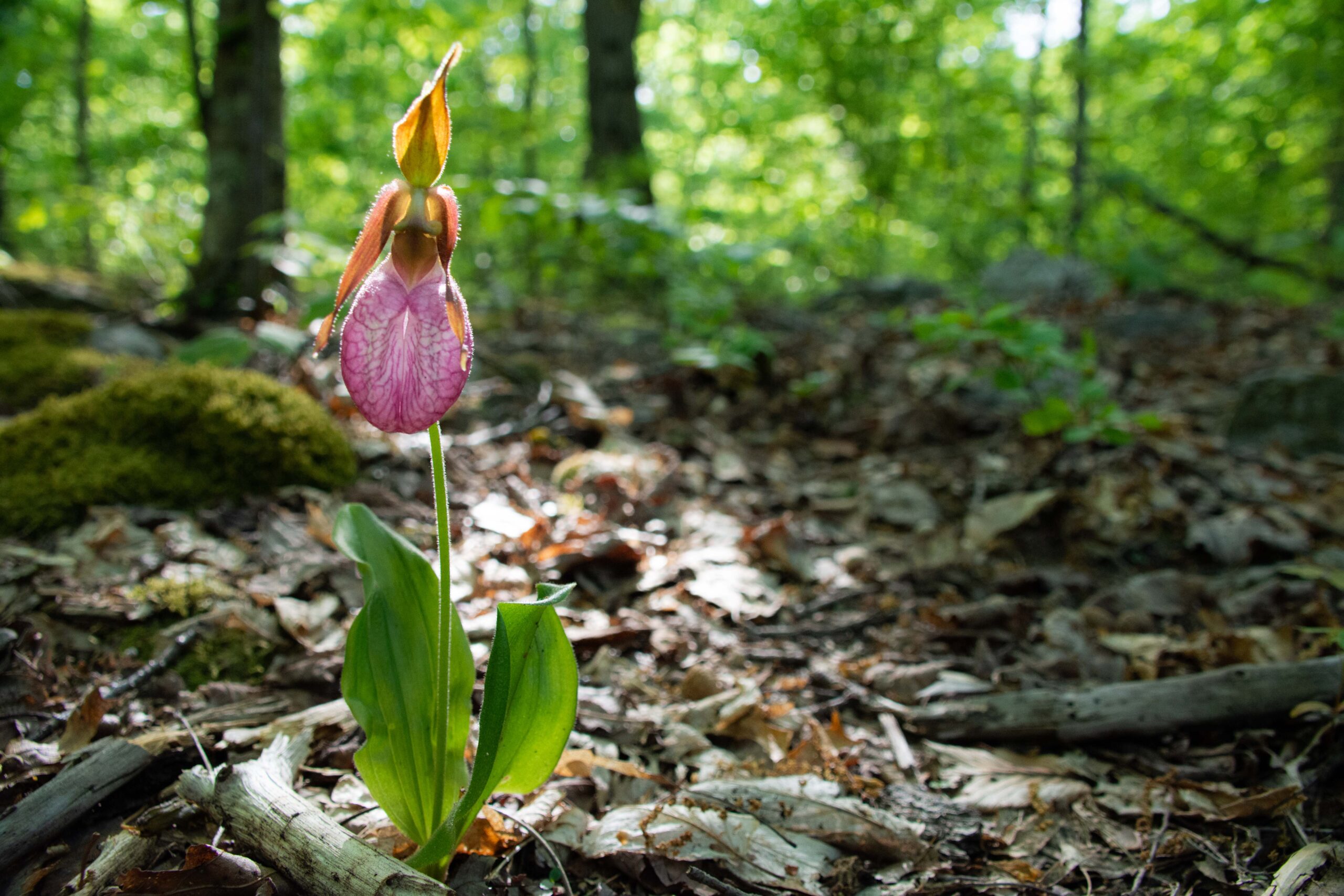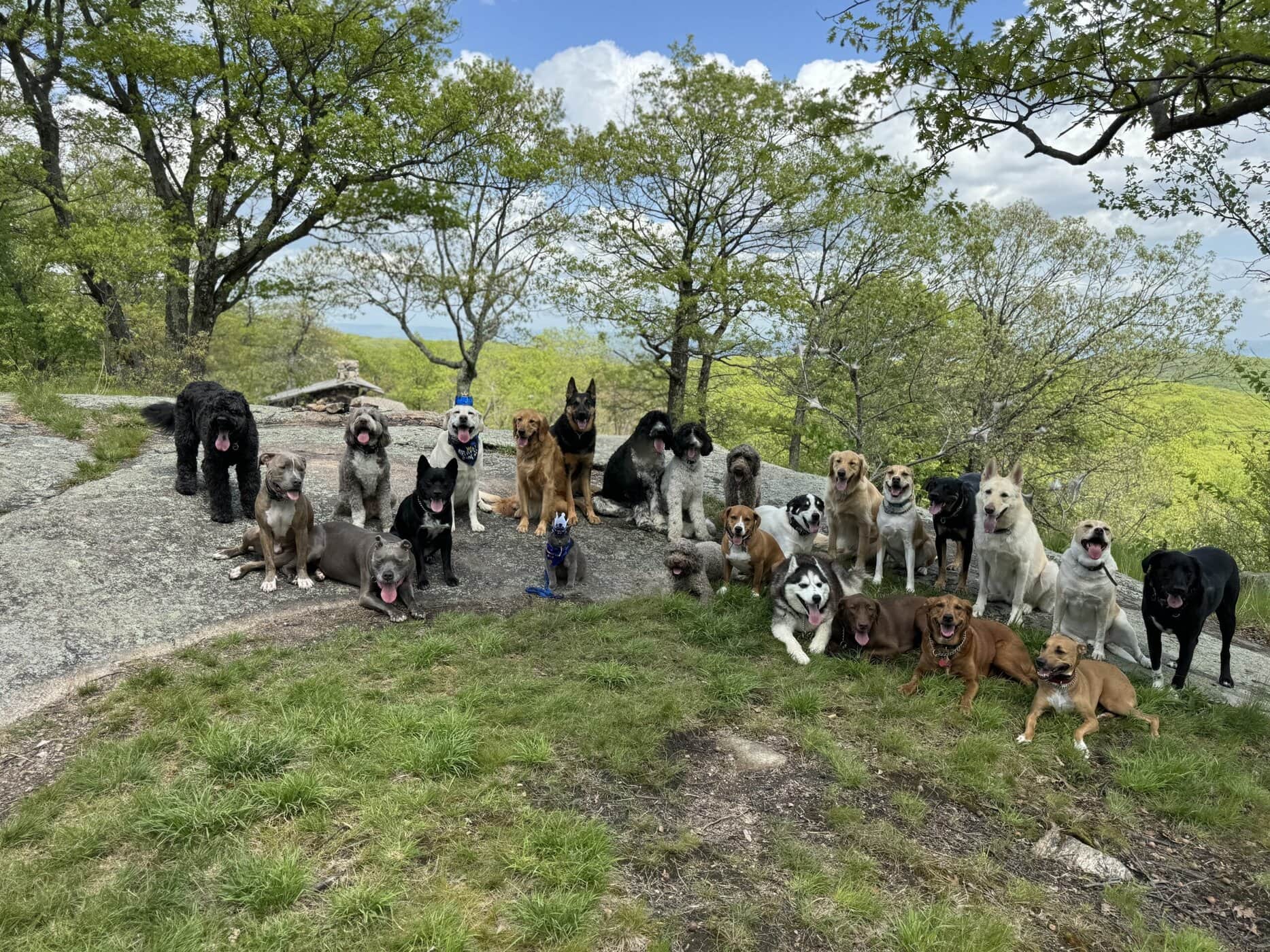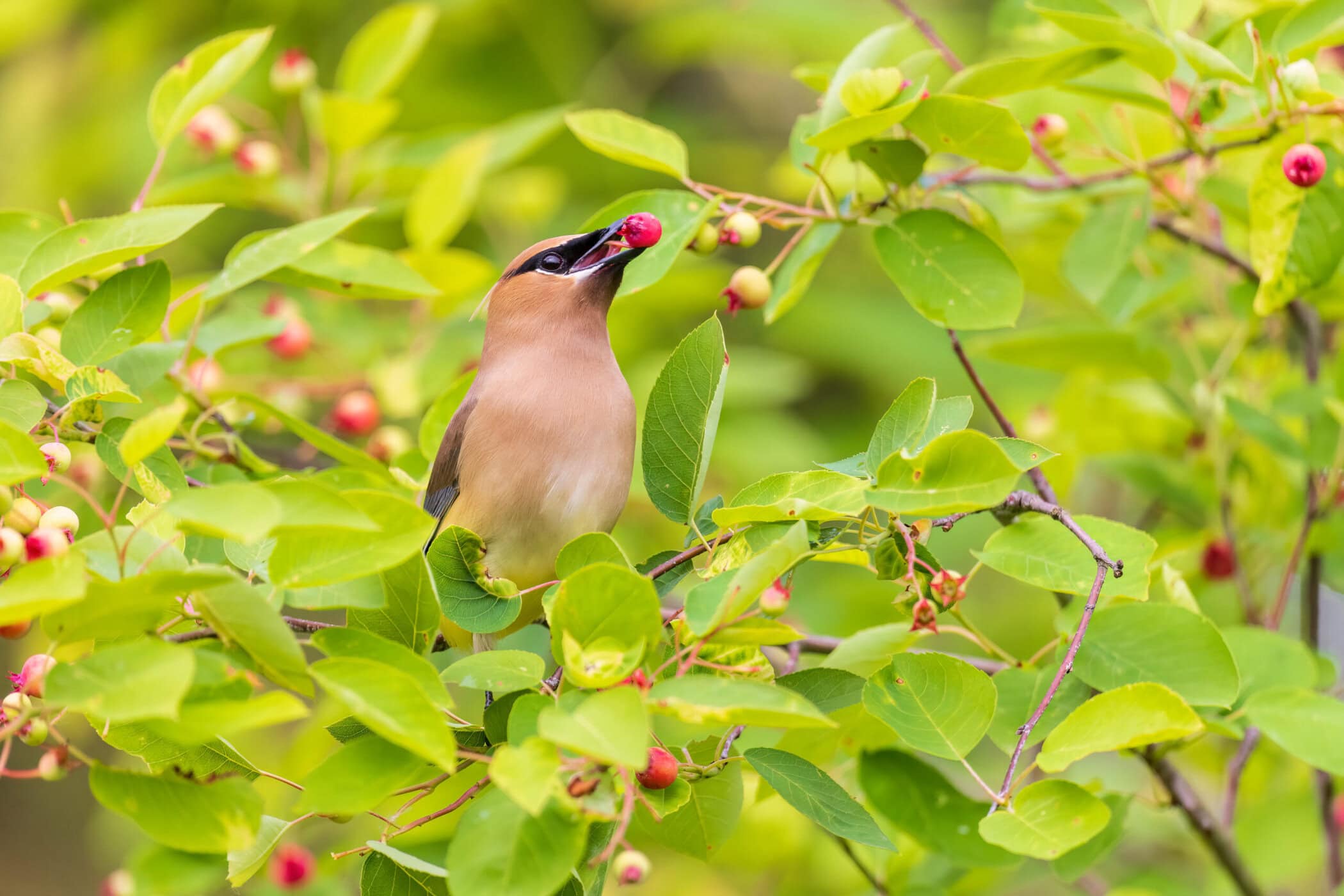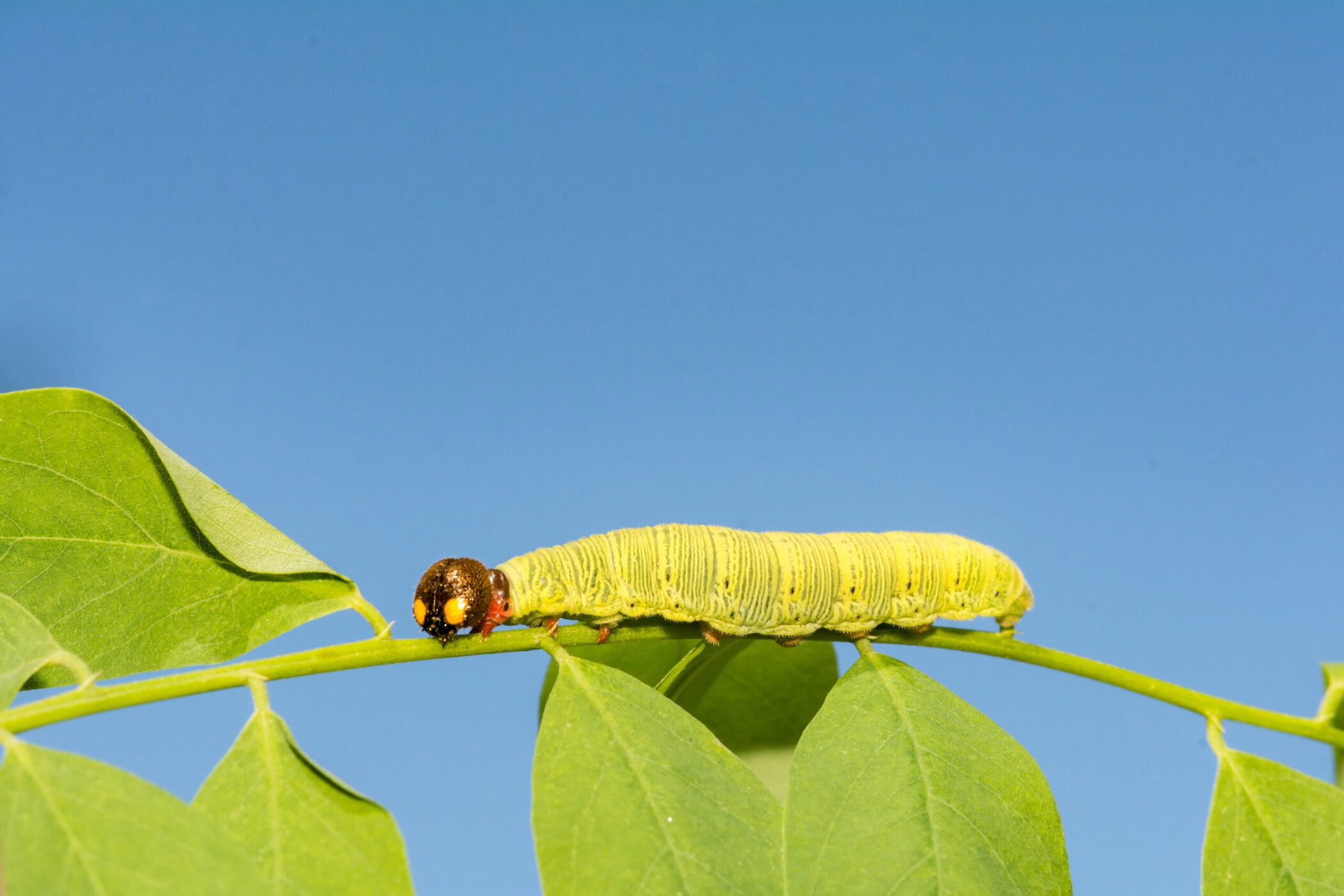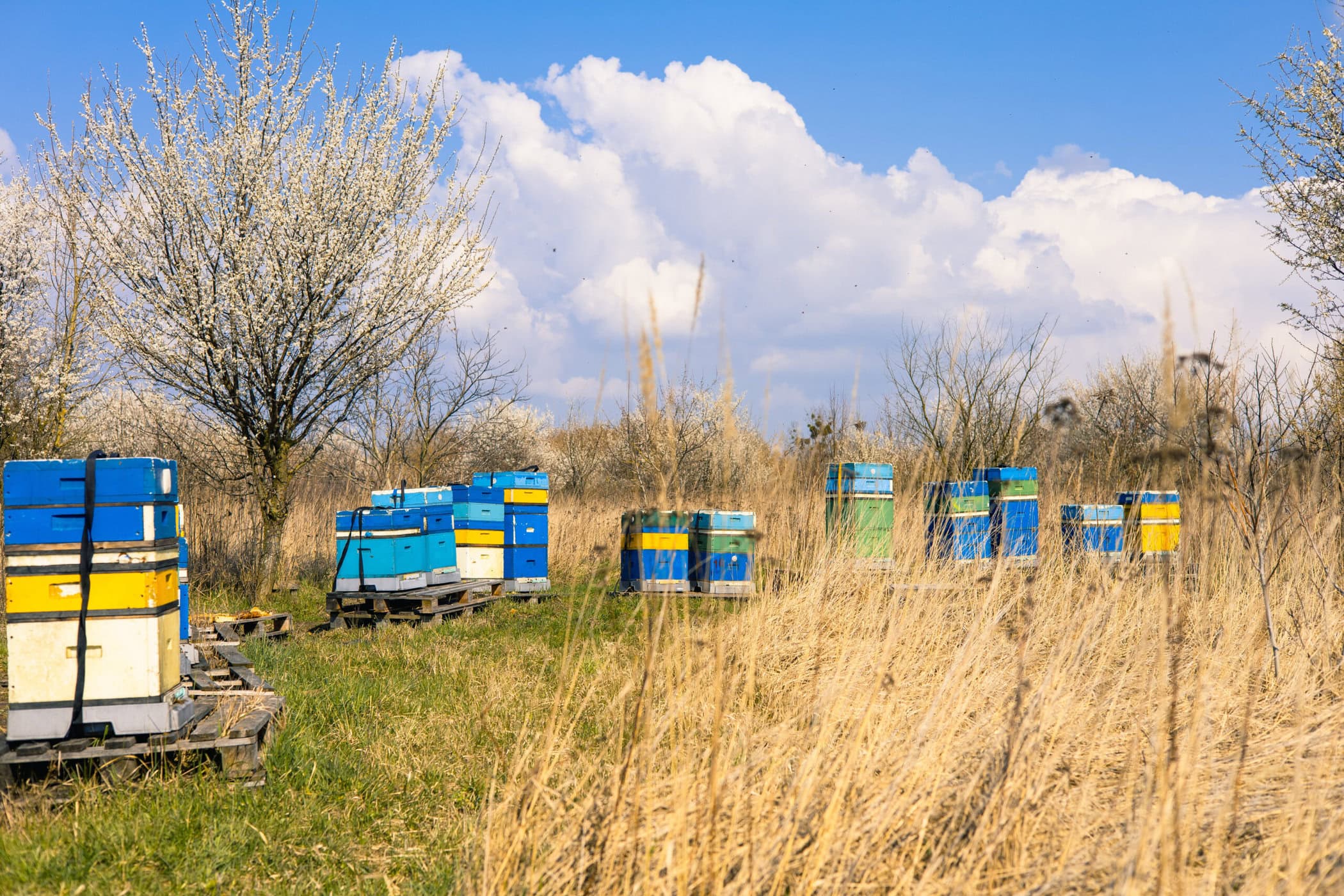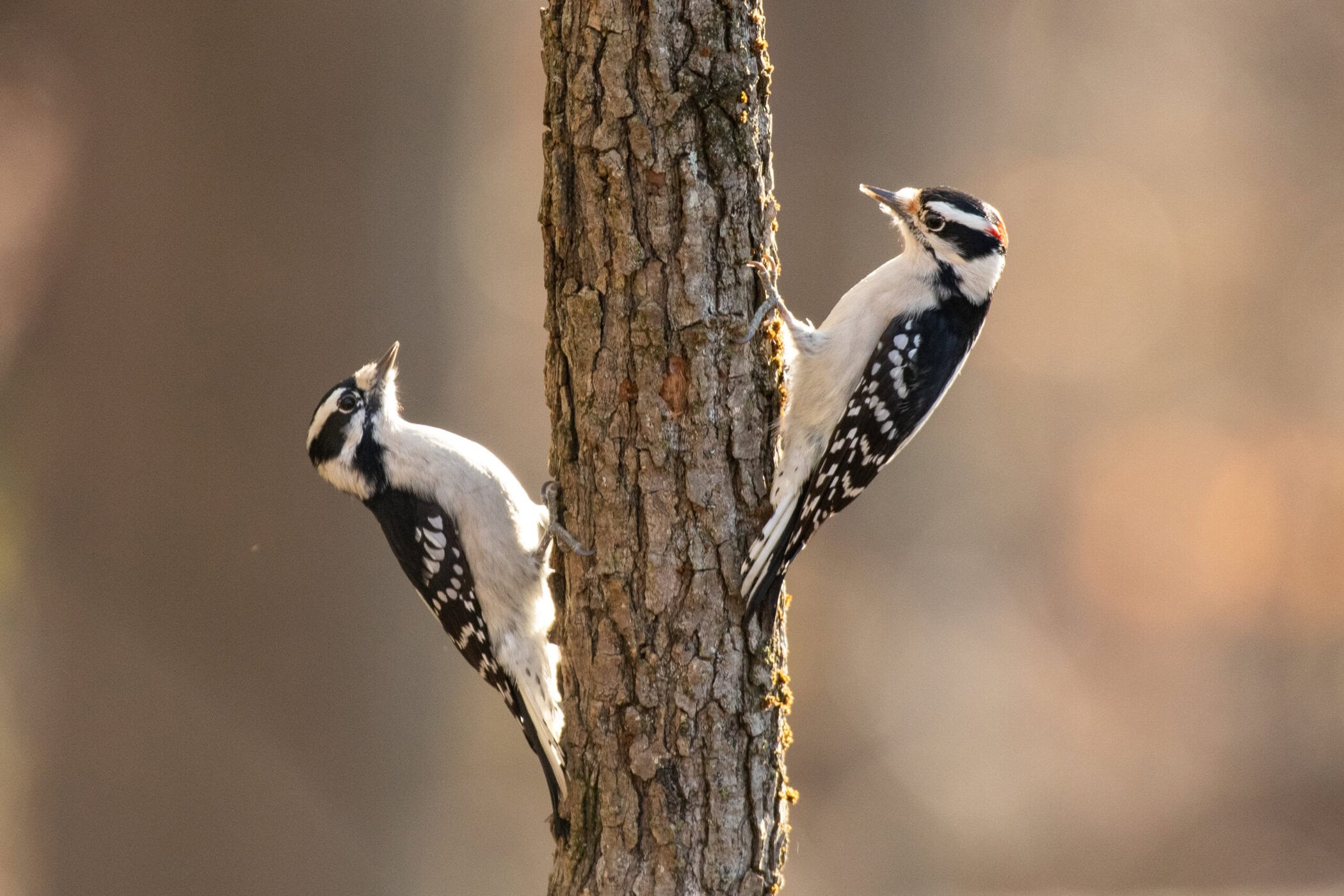These days, it’s not easy being green — at least if you are a Hudson Valley amphibian. Frogs and salamanders both here and around the world are facing a true threat quartet: pollution, disease, invasive species and climate change. As one Swiss biologist, Benedikt Schmidt, said shortly before a recent international symposium on amphibian decline, “the future of amphibians does not look good.”
Scenic Hudson and the Mohonk Preserve are among the organizations working to understand what is happening here in the Hudson Valley. Climate change and habitat loss are among the profound impacts that are likely affecting the vernal pools that serve as breeding grounds for some amphibians.
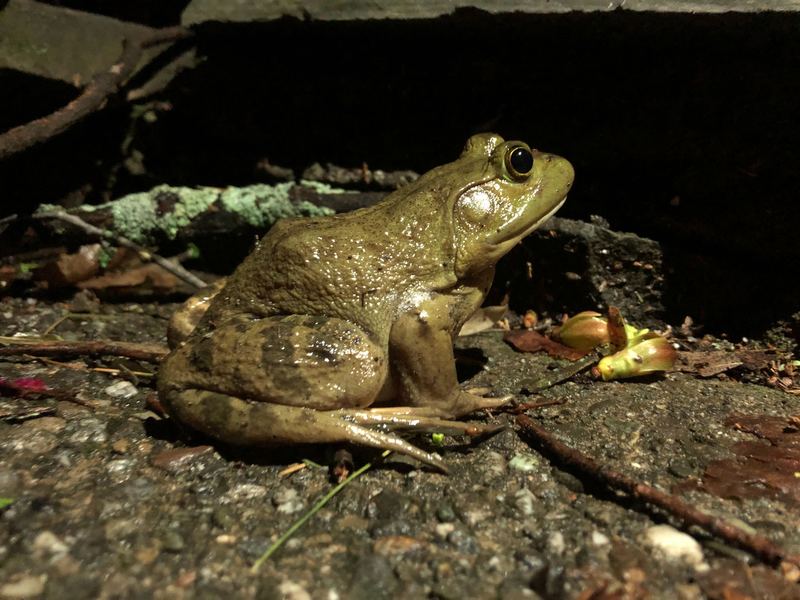
Vernal means relating to spring. These small, temporary pools of water form after snow melts and spring rains come, creating the unique combination of temperature, nutrients, water levels and predator-free (i.e., fish-less) environments that some amphibians need to lay their eggs.
The Hudson Valley’s forests host many vernal pools. But climate change is disrupting patterns that have existed for millennia. Weather unpredictability has been particularly noticeable. Sudden and early winter thaws, for instance, can have devastating impact.
Amphibians that use vernal pools for breeding in the spring often spend their winters in “brumation,” the cold-blooded version of hibernation, Mohonk Preserve Research Ecologist Megan Napoli notes. Vernal pool amphibians like wood frogs will emerge from brumation after the ground has thawed and evening air temperatures stay above 40 degrees Fahrenheit on rainy nights in March and early April.
“With warmer temperatures causing thaws earlier in the spring, we are observing these vernal pool inhabitants emerging from brumation prematurely,” Napoli says. “This can have devastating effects, as these emerging amphibians may use up already depleted fuel reserves and not be able to find available food or be caught mid-breeding when temperatures plummet below freezing again.”
In 2017, Mohonk ecologists recorded 60 such frog deaths in one vernal pool. Under normal conditions, Napoli says, a typical pool will lose about 5 frogs.
Intense Rain Storms Are Increasing
Climate change is also manifesting in longer dry spells and increasingly frequent high-intensity downpours. In the Northeast, there has been a 71% increase in the amount of precipitation falling in high-intensity events between 1958 and 2012, according to the third National Climate Assessment.
“All of these things are much less predictable and much less certain,” says Scenic Hudson Conservation Scientist Alex Wolf, “and so the amphibians have a hard time dealing physiologically with these rapid swings from hot to cold, cold to hot, wet to dry, and dry to wet.”
Both Mohonk Preserve and Scenic Hudson conduct regular surveys of vernal pools on their lands. Since the 1970s, Mohonk Preserve’s staff has been tracking species’ spring arrival times, as well as water temperature, pH levels and depth. The nonprofit’s research team also recently began adding new measurements such as oxygen content, turbidity and conductivity.
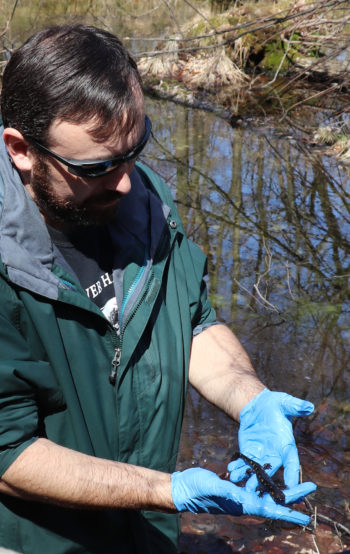
examining a salamander he found at a vernal pool.
(Photo: Seth Martel / Scenic Hudson)
“All of these things are much less predictable and much less certain, and so the amphibians have a hard time dealing physiologically with these rapid swings from hot to cold, cold to hot, wet to dry, and dry to wet.”
Alex Wolf
Conservation Scientist, Scenic Hudson
Scenic Hudson monitors as many as 140 vernal pools across its properties, focusing specifically on “obligate” species that only use these pools to breed. “We are assessing species presence and absence and then, to the best of our ability, trying to get counts of egg masses as well, which can sometimes be very challenging,” Wolf says. “There are some pools with thousands of egg masses.”
Protecting the Pools
Both Mohonk Preserve and Scenic Hudson take steps to ensure their monitoring programs do not contaminate the pools with some of the pathogens that have long affected amphibians, such as chytrid fungus. For instance, researchers disinfect their boots and equipment between visits to each pool.
“One of our highest priorities is keeping the vernal pool habitats pristine and undisturbed,” Napoli says. “Amphibians are incredibly sensitive to environmental stressors, including disease and habitat modification.”
In 2020, after an immense multi-person curation effort, Mohonk Preserve published its long-term dataset of the vernal pool monitoring study on the data repository site Environmental Data Initiative (EDI). The dataset is open-source — meaning anyone can access and download the data, enabling wide-scale contribution to other research studies.
“We are thrilled to be able to freely share our data with the scientific community and others interested in amphibian ecology and conservation, vernal pool community ecology and the natural history of our Northeastern forests,” Napoli says.
Understanding how climate change affects these species is a critical piece to monitoring the overall health of the local ecosystem, the local scientists say. Amphibians are an essential connector species in the food web, eating invertebrates such as worms and slugs, and then making the energy stored in those invertebrates available to larger animals that prey on the amphibians.
Habitat loss and fragmentation remain other huge issues for amphibians. Conserving vernal pools is only effective when the surrounding forest is also conserved, scientists say. Many amphibian species breed in aquatic habitats like these vernal pools, but live much of their adult lives in the forest under leaf litter and soil, playing a key role regulating invertebrate populations that affect soil health. Other amphibians, like the red-backed salamander commonly found in the area, spend their entire lives in the forest.
For vernal pool breeders, experts recommend conserving a buffer of forest at least 4/10 to 6/10 of a mile all around the vernal pools to ensure enough space for these amazing creatures to complete their life cycles. Many studies have shown that when forest cover in an area declines, amphibian populations decline as well. Wood frogs and spotted salamanders, two species Scenic Hudson monitors at vernal pools, have been shown to decline when forest composes less than 30% of an area; red efts are even more sensitive to forest loss, declining when forests cover less than 50% of an area.
Amphibians also connect with humans in a way that is difficult to quantify, from the magical sound spring peepers make to the fact that frogs and salamanders are some of the only vertebrates you can find in the wild and observe up close.
“There is an intrinsic value to nature,” Wolf says. “And for a lot of people having frogs in the landscape and hearing them call in the spring is part of their experience of that landscape.”


